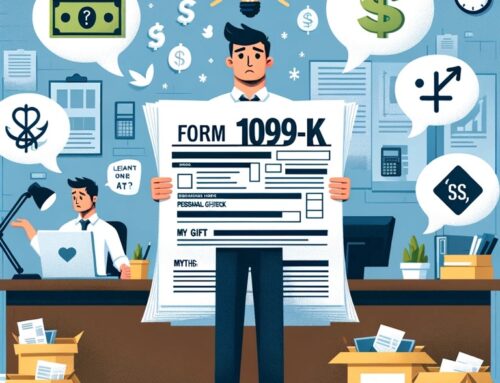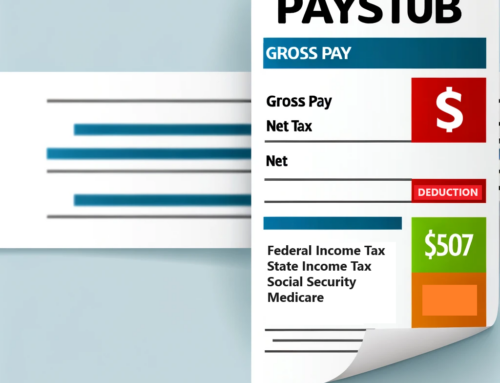The following information reviews the Consolidated Appropriations Act, 2021 (CAA) and the American Rescue Plan Act of 2021 (ARP Act), passed to assist in dealing with the economic impacts of COVID-19. Source of Articles: NATPtax.com
INDIVIDUAL TAXPAYERS:
Economic Impact Payments
The ARP Act provided a third economic impact payment (EIP3) in 2021 of $1,400 ($2,800 for married couples filing a joint return if both spouses have a valid SSN, or if one spouse has a valid SSN and one spouse was an active member of the U.S. Armed Forces at any time during the taxable year) for each eligible individual with a valid SSN plus $1,400 for each dependent (including qualifying children and qualifying relatives regardless of age).
For additional information go to: https://www.irs.gov/newsroom/questions-and-answers-about-the-third-economic-impact-payment
Earned Income Tax Credit
For 2021 only, the minimum age to claim the EIC for taxpayers without children (childless EIC) generally has been lowered from age 25 to age 19. However, eligible students carrying
at least half the normal full-time work load during at least five calendar months must be age 24. The maximum age limit of 65 for claiming the childless EIC has been eliminated as well.
Also, the credit and phaseout percentage increases from 7.65% to 15.3% for an individual with no qualifying children. The earned income at which the taxpayer receives the maximum credit
amount increases to $9,820 and the phase-out begins with earned income of $11,610 ($17,560 for joint filers). The maximum EIC amount in 2021 increases to $1,502. Taxpayers may temporarily use their 2019 earned income to determine the EIC on their 2021 tax return if their 2019 earned income was more than their 2021 earned income.
Child and dependent care credit
For 2021 only, the child and dependent care credit is fully refundable and the dollar limit for eligible expenses increases from $3,000 to $8,000 for one eligible child and from $6,000 to $16,000 for two or more eligible children. The maximum credit rate also increases from 35% to 50%, and the AGI level at which this percentage is reduced increases substantially from $15,000 to $125,000.
Child and Additional child tax credit
In general, the child tax credit (CTC) is $2,000 per qualifying child under age 17 and begins to phase out when AGI is over $400,000 on a MFJ return or over $200,000 on all other returns.
If an individual’s CTC exceeds their tax liability, they may be eligible for the refundable additional child tax credit (ACTC), which generally equals 15% of the taxpayer’s earned income in excess of $2,500, limited to $1,400 per qualifying child. Recent legislation updated the provisions for the CTC and ACTC for 2020 and 2021. The Additional child tax credit was increased (additional $1,600 or $1,000 per-child in excess of the present-law $2,000 per-child).
Advanced child tax credit payments
Advance payments of the 2021 CTC will be made monthly from July through Dec. of 2021. Generally, they will be 50% of the taxpayers estimated 2021 CTC based on their 2020 return (2019 return if the 2020 return hasn’t been filed). The taxpayer may receive up to $300 per month for each child under age 6 and up to $250 per month for each child age 6 to 17. Keep in mind, if the taxpayer receives advance CTC payments in excess of the CTC allowed on their 2021 return, they may have to repay some or all of it.
Charitable Contributions
The Taxpayer Certainty and Disaster Relief Act of 2020 (TCDTRA) suspended the 60% limitation on the deduction of charitable contributions made in cash for 2021. For 2021, individual taxpayers who itemize deductions and contribute cash to a qualified charity may deduct up to 100% of their AGI after taking into account other contributions subject to the charitable contribution limitations. The 100% deduction limitation expires after 2021. TCDTRA also provides for a deduction of up to $300 (with MFJ filers allowed $600) for non-itemizers for tax year 2021.
Premium tax credit
For 2021 and 2022, the ARP improves health insurance affordability by expanding premium assistance for individuals with household income above 400% of the FPL and increasing the PTC to lower or eliminate health insurance premiums and ensure enrollees will not pay more than 8.5% of their income for coverage. This change has the effect of increasing the number of people who are eligible for the PTC. The ARP suspended the requirement to repay excess advance payments of the premium tax credit (excess APTC) for tax year 2020 only [§36B(f)(2)(B)(iii)].
Education Provisions
For tax years beginning after Dec. 31, 2020, the CAA repealed the tuition and fees deduction. In place of this deduction, the CAA also increased the MAGI limitations for the lifetime learning credit. The ARP added a special rule for student loan discharges in 2021 through 2025. Under §108(f) (5), gross income does not include any amount that would be cancellation of debt income (CODI) from the discharge of certain student loans.
BUSINESS TAXPAYERS:
Employee retention credit
The CARES Act was signed into law on March 27, 2020, and introduced the employee retention credit (ERC) to encourage businesses to keep employees on payroll during the COVID-19
pandemic. The ERC is a refundable payroll tax credit equal to 50% of qualified wages paid or incurred from March 13, 2020, through Dec. 31, 2020. The CAA extended the ERC through June 30, 2021. The biggest change retroactively allows eligible employers who received PPP loans to claim the ERC for qualified wages paid in 2020 and 2021, provided they don’t use the same wages for the credit and PPP loan forgiveness.
Paid sick and family leave credits
The COVID-19 paid sick and family leave credits were first introduced in 2020 under the Families First Coronavirus Response Act (FFCRA). The CAA extended these credits through March 31, 2021, for eligible employers that voluntarily provide paid sick or family leave after Dec. 31, 2020. Eligible employers include those that would have been required to provide paid sick and family leave if the employer mandate under the FFCRA had been extended. The total paid leave limits remained unchanged though. The ARP Act extended these paid leave credits from April 1, 2021, through Sept. 30, 2021, for eligible employers providing sick or family leave that would be required if the FFCRA applied after March 31, 2021.
PPP loan expenses
With the enactment of the CAA, businesses may retroactively deduct original eligible expenses even though they received PPP loans to cover them. Specifically, no amount should be included
in gross income due to PPP loan forgiveness and no deduction should be denied, no tax attribute reduced, and no basis increase denied on account of that exclusion.
Premium assistance for COBRA benefits
The ARP provides a temporary 100% reduction in COBRA premiums otherwise payable by assistance eligible individuals and their families. In addition, the new law provides a corresponding tax credit for the person to whom COBRA premiums are payable, such as the employer, multiemployer plan or insurer. The temporary premium assistance and tax credit are also available to individuals enrolled in continuation coverage under state programs that provide coverage comparable to COBRA, often referred to as mini-COBRA.
Employee Social Security tax deferral
The CAA and Notice 2021-11 extended the time period to repay. Thus, repayment of the employee’s portion of the deferral started Jan. 1, 2021, and will continue through Dec. 31, 2021. Payments made by Jan. 3, 2022, will be timely because Dec. 31, 2021, is a holiday. The employer should send repayments to the IRS as they collect them. If the employer does not repay the deferred portion on time, penalties and interest will begin to accrue for any unpaid balance on Jan. 4, 2022.
Excess business loss limitation
The CARES Act retroactively eliminated the EBL limit for losses arising in tax years 2018, 2019 and 2020. Thus, losses are fully deductible in those years. The ARP extended the EBL limit one year through 2026. Thus, the EBL limitation applies to tax years beginning after Dec. 31, 2020, and before Jan. 1, 2027.
Educational assistance programs
The CARES Act provided that educational assistance temporarily includes payments made by an employer, for the benefit of an employee, whether paid to the employee or to a lender, of principal or interest on any qualified education loan incurred by the employee for education of the employee [§127(c)(1)(B)]. This provision is subject to the overall $5,250 maximum exclusion limit and only applies to payments made after March 27, 2020, and before Jan. 1, 2021. The CAA extended this provision for payments made after Dec. 31, 2020, and before Jan. 1, 2026.
Business meals
The CAA temporarily provides a 100% business expense deduction, vs. 50%, for the cost of food and beverages provided by a restaurant, regarding expenses paid or incurred after Dec. 31, 2020, and before Jan. 1, 2023.
Deduction for energy efficient improvements to commercial buildings
The CAA permanently extended the energy efficient commercial building property deduction (§179D). The energy efficient commercial building property deduction was originally enacted in 2005 and was set to expire on Dec. 31, 2020. Under §179D the owner or lessee of a commercial building can accelerate the depreciation deduction for the installation of energy efficient property. The deduction is up to $1.80 per square foot that would otherwise be depreciated over 27-and-a-half years or 39 years.
Charitable contributions
C corporation deductions for charitable contributions are generally limited to 10% of taxable income [§170(b)(2)(A)]. The percentage limitation on the charitable contribution deduction for
cash contributions for C corporations is increased to 25% for 2020 and 2021. Corporations are also allowed to deduct up to 100% of their taxable income for certain qualified disaster relief contributions made beginning on Jan. 1, 2020, and before Feb. 25, 2021.
Please note, these are general explanations. For the full laws, requirements, and exclusions, visit IRS.gov.




